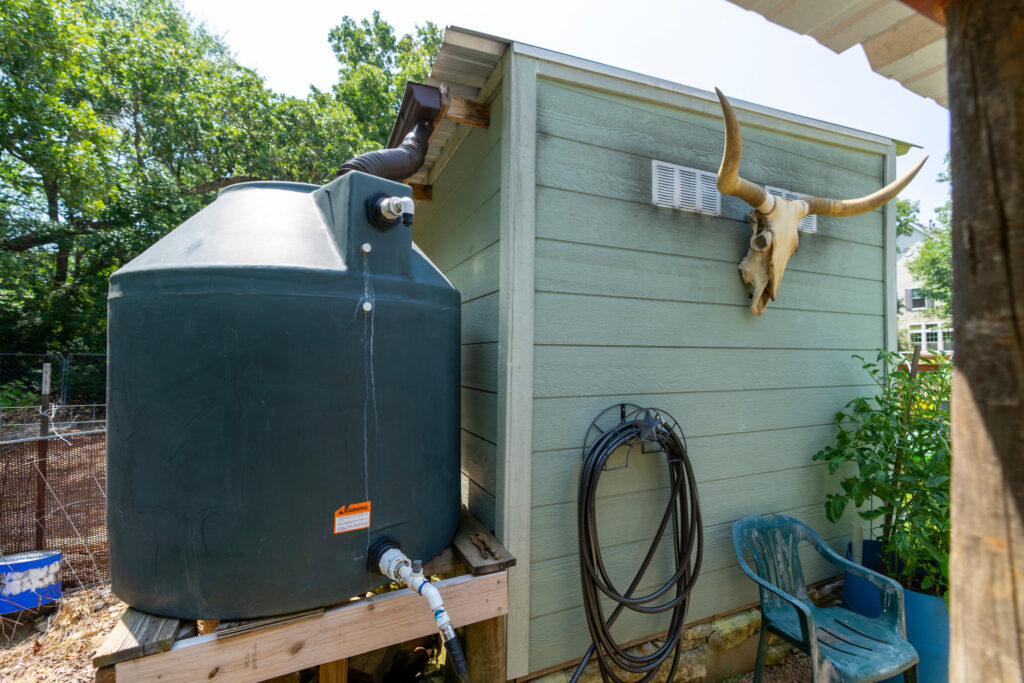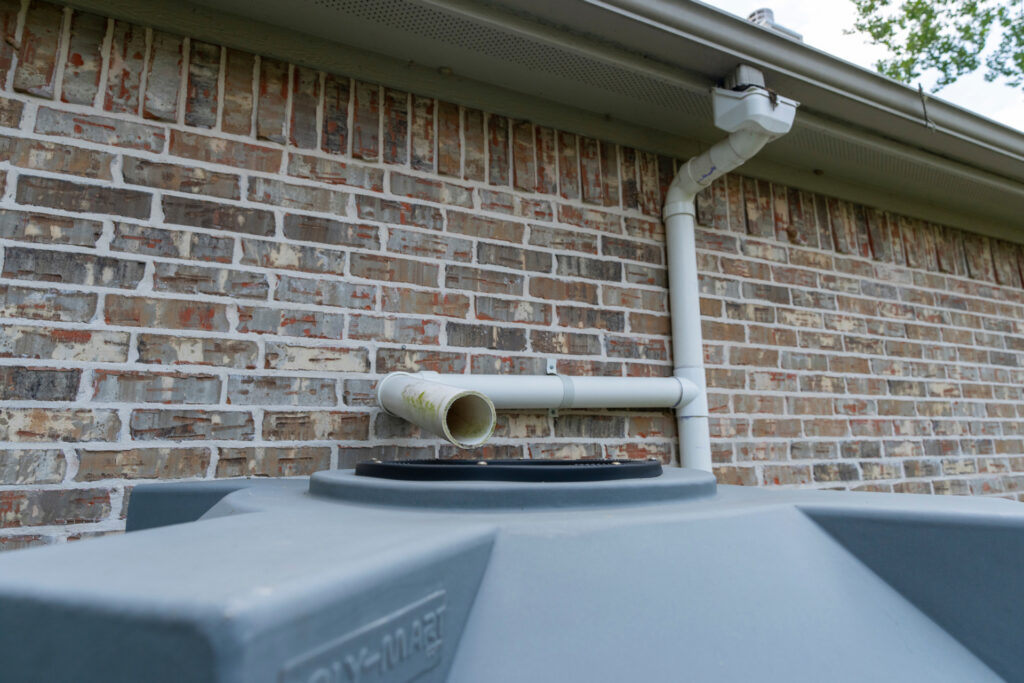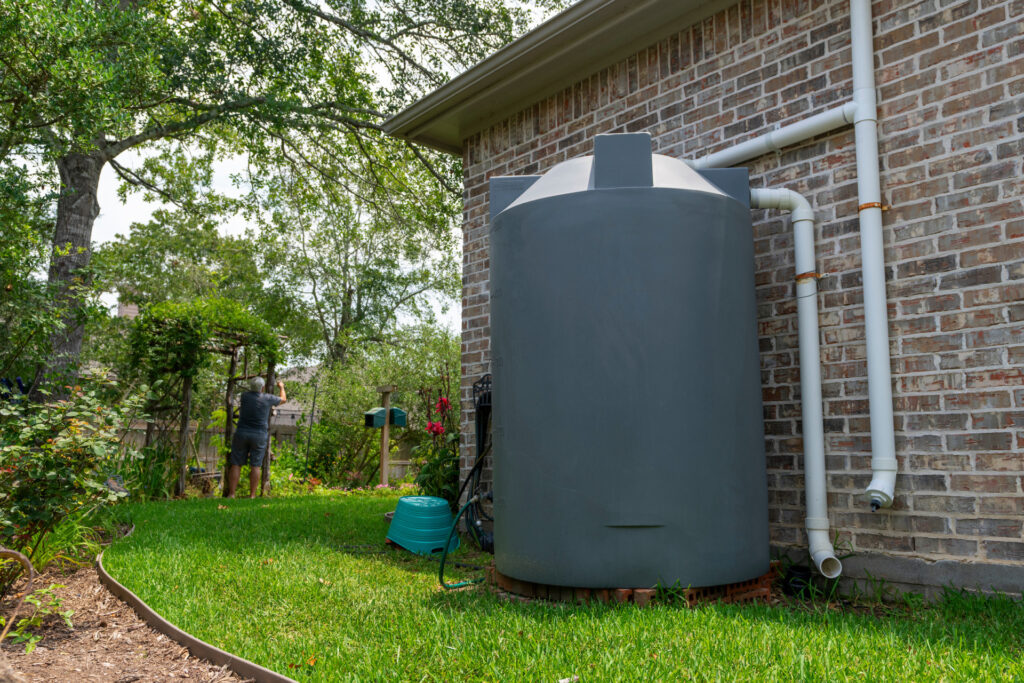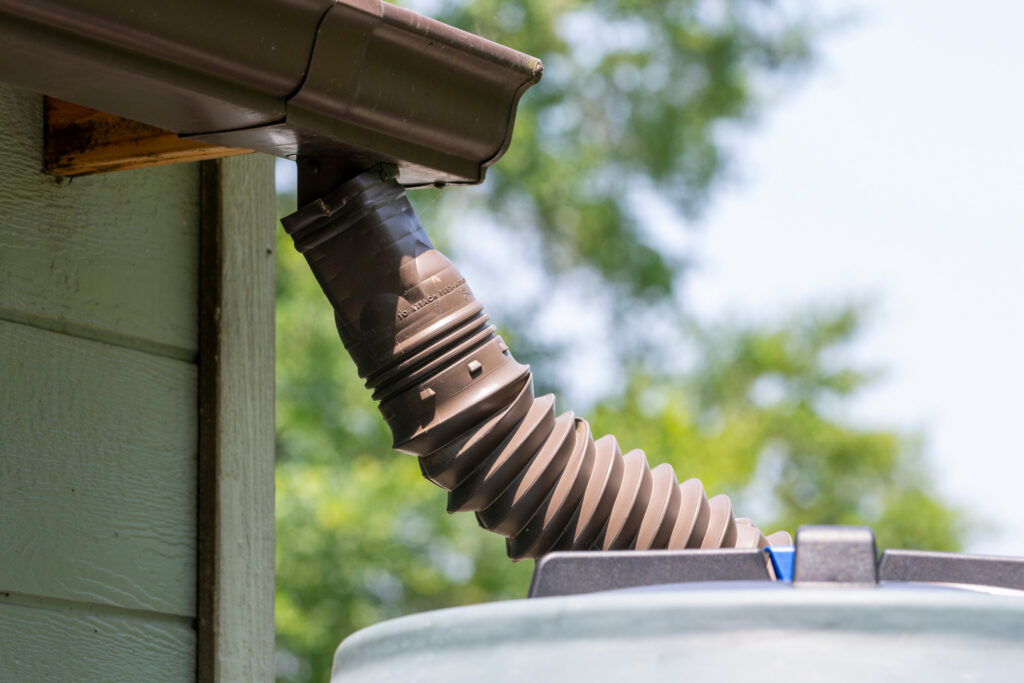Beginner rainwater harvesting system tips
Harvesting rainwater conserves resources, can cut water bills and help landscapes through drought, water restrictions
A little can go a long way when harvesting rainwater.

A simple rainwater collection systems can supplement irrigation for lawns, gardens and landscapes while advanced systems can provide all the water needed in households, said Fouad Jaber, Ph.D., water resource specialist in the Texas A&M AgriLife Extension Service and professor in the Department of Biological and Agricultural Engineering in the College of Agriculture and Life Sciences, Dallas.
Jaber prefers to lead the conversation about harvesting rainwater with an impressive calculation – 1 inch of rainfall equals 0.62 gallons of water per square foot. This means a homeowner could collect roughly 620 gallons of water from a 1,000-square-foot roof from a 1-inch rain.
“At the beginning of a water harvesting program, I always ask people to guess how much rain it might take to fill a 55-gallon barrel because that is a good reference point,” he said. “They’re surprised to hear a single 1-inch rain on a 1,000 square foot roof could fill 11 of them.”
Basic considerations for a rainwater harvesting system
Rainwater harvesting systems can be as simple or complex as the individual is willing to invest resources, Jaber said. Most homeowners are interested in harvesting rainwater to use in landscapes and gardens. For that, a single 55-gallon drum is a good place to start.
Jaber said food-grade 55-gallon plastic barrels are relatively low-cost and can usually be sourced locally. There are a variety of ways water can enter and exit the barrel, but there should be an opening that allows overflow water to escape when it is full.
Placing the barrel to catch water from the valley of a roof works well, but Jaber said gutters are the most efficient way to harvest rainwater.
“Gutters are an additional cost, but they are not a huge cost, and when you’re catching water from your entire roof rather than the area that runs into the valley of a roof, suddenly you have enough water to add more barrels,” he said. “It’s all an investment, but you never have unused water and will find more and more ways to use it.”
Downspouts can go directly into the barrel or be fitted with a rain chain or hose to guide water into the barrel. A spigot can be placed near the bottom of the barrel. Jaber recommends installing a two-way, restricted flow spigot to allow multiple use options.




Screens should be placed on the gutters or around the downspout to prevent large and small debris like leaves and pollen from getting into the barrel, Jaber said. Screens will also prevent mosquitoes and should cover any potential entry point.
Barrels and other catchments should be dark or painted a dark color to prevent sunlight creating algae blooms in the stored water, Jaber said. They should also be elevated so that users can fill buckets or to let gravity feed attached hoses.
The water in simple systems should be considered “gray water,” and not suitable for human consumption, Jaber said. An advanced system should include a 5-micron filter to remove all solids like bird droppings and a UV water purifier to kill bacteria like E. coli.
Jaber said homeowners should be mindful of watering vegetables with non-potable water. He suggests watering in the morning and harvesting at the end of the day. This allows the sun to help disinfect the produce. However, produce that may have come in contact with the water should be thoroughly washed to avoid potential bacteria contamination.
Watering plants directly with soaker hoses is the most efficient way to irrigate, he said. It reduces water loss and any potential produce contamination from water splashing.
It’s also a good maintenance practice to wash the barrel using a tablespoon of bleach once each year, he said.
“A barrel is a good starting point for any system, but gutters, multiple barrels and a soaker hose system are investments to consider as well,” Jaber said. “Those items will maximize the resource and makes it easier to collect and distribute the water.”
The many benefits of harvesting rainwater

Harvesting rainfall has several benefits for homeowners and the environment, Jaber said. Collecting and using rainwater reduces water bills and increases water availability during water restrictions due to drought. It also provides a healthier water source for plants compared to chlorinated water from taps.
Catching rain from rooftops also reduces the amount of runoff rapidly moving into nearby watersheds, he said. Neighborhoods with multiple houses harvesting rainfall can reduce flash flooding, soil erosion and the movement of pollutants into creeks and rivers.
Harvesting also reduces the amount of energy needed within the municipal water systems. Rather than water running off the roof, down a storm drain, into a watershed and eventually to a lake where it is pumped back to municipal water treatment plants and eventually the homeowner’s tap, Jaber said harvesting keeps that potential runoff where it fell.
“Rainwater harvesting is a conservation and water quality practice, and it can really be an advantage during water restrictions,” he said. “There are so many good reasons to harvest rainwater, and we typically see homeowners expand or upgrade their system once they’ve experienced the benefits.”
People living in areas that receive very little rainfall may feel like collecting water is not worth it, but Jaber said a storm here and sprinkle there can add up quickly. A 1,500 square foot roof can catch around 7,500-8,400 gallons of rainwater from 8-9 inches of annual rainfall.
The key is to use the water, especially if the catchment is limited to a barrel or two, Jaber said. The water can provide supplemental irrigation for plants, wildlife or be used for chores like washing the car.
“Using the water between rains is important,” he said. “There are plenty of ways to use the water around the house. The water is a resource that is there to be used.”
AgriLife Extension has several resources available online, including a free rainwater harvesting guide at https://tx.ag/RainwaterHarvestGuide.


